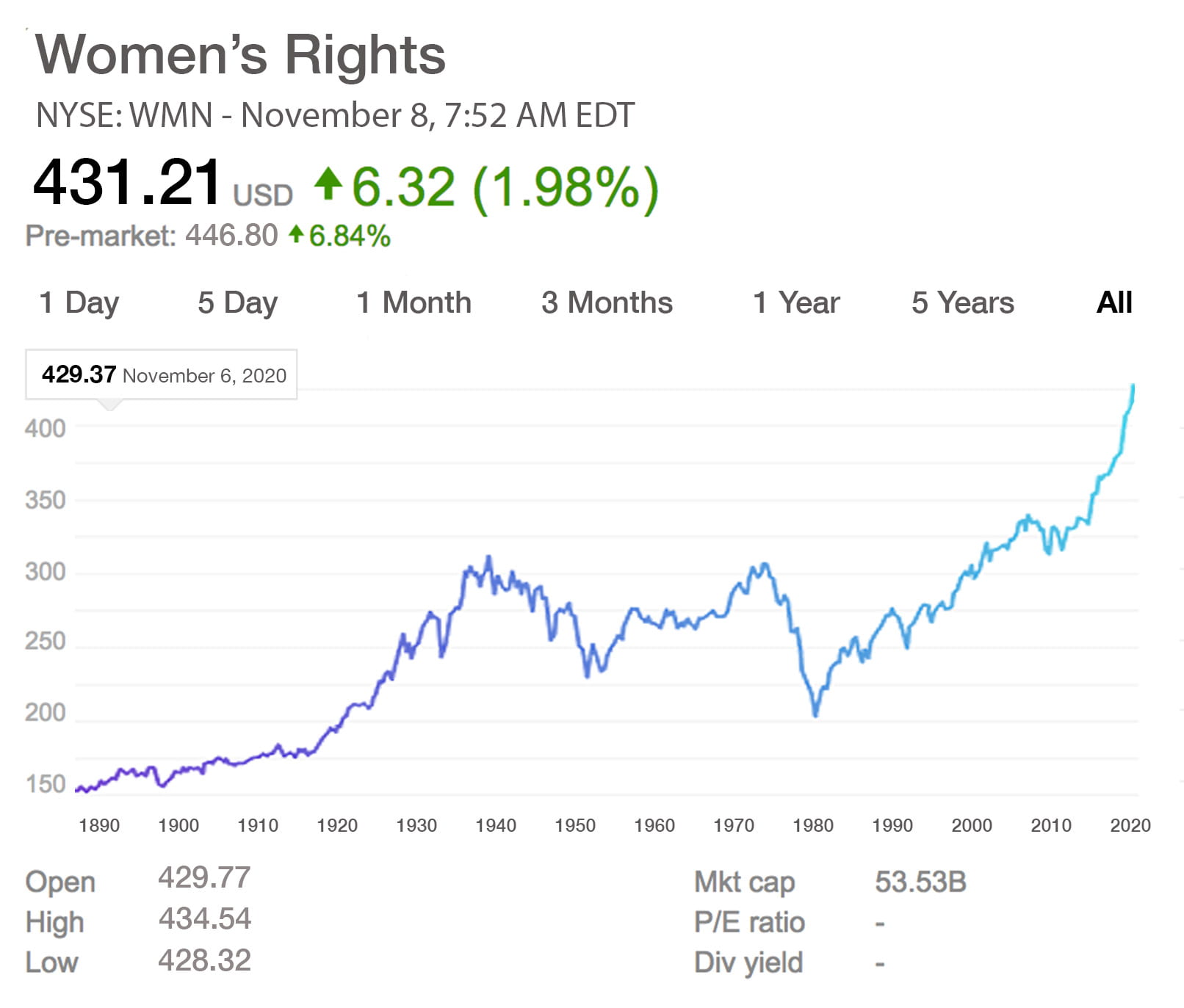
Wickstone’s Weekly Work – #4
This week, as we concluded our studies on women’s rights and completed the timeline of events, I was inspired to dedicate this weeks post to the entire women’s rights movement’s progression. During class this week, a classmate – whom I can’t quite recall – mentioned something about in the 1980’s, pro-life activism saw a spike, following the new abortion laws of the past decade. This activism threatened to undo the hard work that led up the abortion laws, and this classmate added that it almost felt like a “crash” in the movement, a scare, a jolt in the progress. This really got me thinking about a passion of mine, the stock market, and how there are genuine similarities behind the movement and the way stocks move.
So with that all being said, this week I have created a graphic that depicts the women’s rights movement in a stock chart format, highlighting instruments relating to the movement.

Now, although I’d like to think this is relatively representative of the real course of the women’s rights movement, there are certainly some discrepancies, so its best you take this as an art piece over an informational graphic! There are some points on the graphic I’d like to mention in specific, such as the general climb that the graph follows. Over the course of my learning I’ve learnt that the women’s right movement saw steady pace in some sections, though definitely did not see linear growth. As I mentioned, the little “crash” of the 80s is a portion of history that was scary and brought uncertainty in to the eyes of the movement’s followers. This is similar to the way stocks work, no better example is the current situation we are in right now, where uncertainty has put the market in an unprecedented state.

1980s Pro-Life Activism
Another thing I’d like to highlight is the November 6th price. I chose this as an important price and date because the case for women’s rights and, more importantly, women in general, saw a big event take place with the likes of the USA voting in the first female VP ever, Kamala Harris. This is an important event in women’s history, and marks what is hopefully a turning point for women’s roles in the political world, where they find themselves drastically under-represented.